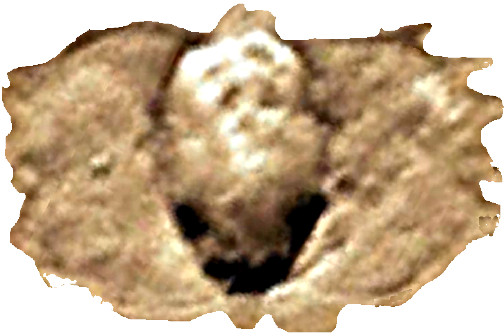Identification of Precambrian deposits in glacial till, unique to the Saginaw lobe
Identification of Precambrian deposits in glacial till, unique to the Saginaw lobe
...and not seen in any other Wisconsin-era lobe deposits

The Saginaw bay till contained "a slightly metamorphosed conglomerate having a fine-grained matrix and a wholly unsorted aspect resembling tillite (0.2%)" was reported. Furthermore, "The tillite (?) and jasper conglomerate appeared only in Saginaw till "
Pebble and Sand Lithology of the major Wisconsin Glacial Lobes of the central lowland
Richard C Anderson, Geological Society of America Bulletin 1957;68;1415-1450, November 1967.
Abstract:
.Pebble and sand-grain counts were taken from the axial portions of moraines of six Wisconsin glacial lobes of the Central Lowland (Erie, Saginaw, Lake Michigan, Green Bay, Des Moines, and lowan), and the observed distribution of lithologic types was interpreted in terms of provenance, lithologic properties, and glacial processes. It appears unlikely that the glacial lobes of the Central Lowland can be differentiated on thebasis of a single "indicator" lithology. Although several lithologies were found to be distinctive of some lobes and not of others, only the Saginaw lobe contained lithologies not found elsewhere (jasper conglomerate and a Precambrian conglomerate resembling tillite). Investigation of the relative proportion of lithologic types appears to be the most fruitful method for the differentiation of glacial lobes. Several pebble counts taken from Kansan till in eastern Iowa and western Illinois substantiate this general method by showing strong lithologic affinities toward the lowan drift and thus indicating a Keewatin source. This conclusion has been reached by others using various methods of approach
Our proposed impact would have likely generated a small component of metamorphosed conglomerate as a product of the significant impact heating that would have occurred. While the shallow angle of a de-orbiting terrestrial satellite would generate significantly lower melt quantities than a more "common" impact out of solar orbit, we do expect some melt melt and metamorphosis. The initial impact, as proposed, would have been into a 1 to 2km thick pure ice sheet, further reducing the volume of terrestrial strata melt.
Tillites, Diamictites, and Ballistic Ejecta of Large Impacts
Michael R. Rampino, Department of Earth System Science, New York University, New York, New York 10003
The Journal of Geology, Vol. 102, No. 4 (Jul., 1994), pp. 439-456
ABSTRACT
In this paper, Dr. Rampino reviews the geomorphology of the classic tillite formations and notes that in several cases, strata understood to be of glacial origin has been re-classified as impact braccia. Correlation to climatic changes and extinction episodes is also discussed. In his conclusion, he asks:The primary evidence for the temporal and spatial distribution of glaciation prior to the Cenozoic is the occurrence of tillites. These are diamictites (poorly sorted mixtures of very coarse-grained to fine-grained sediments), and associated deposits, which have features considered diagnostic of glacial action. The discovery that many diamictite-bearing sequences were the products of debris flows and related mass flows, with contemporaneous rainout of coarse sediment, has led to the reinterpretation of many tillites as glaciomarine debris-flow deposits. Fallout of ballistic ejecta from the impact of large asteroids or comets can also create large-scale debris flows with simultaneous rainout of debris. Recent calculations of the predicted volume and distribution of impact-generated diamictites suggest that they should be common in the geologic record. Moreover, ballistic debris-flow deposits can apparently exhibit a number of features considered characteristic of glacial deposits (e.g., striated clasts, eroded and striated pavements). The possible confusion between glacial and impact diamictites-a few diamictite deposits formerly interpreted as glacial or questionably glacial in origin are already known to be impact ejecta-suggests that a review of the properties of diamictites of various origins is required. Evidence of shock deformation in diamictites is the most important criterion for determining an impact origin. It is possible that some diamictites identified as glaciogenic may actually be ejecta of large impacts, which may help to explain climatic anomalies, such as Lower Proterozoic tillites at a time of predicted global warmth, and the low-latitude distribution of some Upper Proterozoic glacial deposits.
Could some inferred glacial deposits in the geologic record be the products of debris flows caused by large impact events? Confusion between glacial deposits and impact ejecta can come from the fact that both glacial diamictites and impact diamictites are apparently commonly the products of massive debris flows and debris rain sediments. This is compounded by the presence of striated stones, striated pavements and dropstones in both kinds of deposits. Thus, it may be difficult to tell glacial diamictites from impact diamictites, suggesting that additional criteria are necessary.



